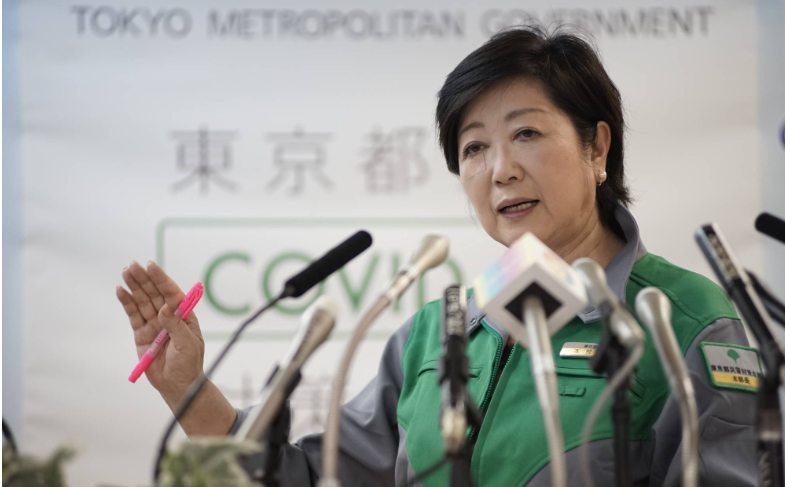The Feminine Face of Power: Can Takaiichi Change Japan?

Sanae Takaichi, a 64-year-old conservative politician, was appointed as Japan’s first female prime minister in late October-a historic event marked by stark contradictions. She distances herself from feminist movements, opposes same-sex marriage, defends customary family values, and even rejects women keeping their maiden names after marriage.
Her appointment came at a time when the Liberal Democratic Party (LDP) faced its greatest turmoil in decades following its electoral defeat in July 2025 and the collapse of its 26-year coalition with the Komeito party.
Considered the political heir to former prime Minister Shinzo Abe-who was assassinated-Takaichi has pledged to continue Abe’s economic policies under the banner “Takaichinomics.” Yet the central question remains: can a woman with a stringent and traditionally masculine approach rescue a party in crisis and transform her country?
Unfeminine Approach: Survival Strategy or Constraint?
Takaichi has consistently projected herself as strict, disciplined, and loyal to traditional LDP values. She cites Margaret Thatcher as her leadership role model and references this by wearing navy blue suits at interviews and formal events.
Just as Thatcher had to act tougher than her male peers to establish power within Britain’s Conservative Party, Takaichi has followed a similar path within Japan’s male-dominated ruling party. In several interviews she has emphasized that she supports “equal opportunities” rather than gender quotas; ministers should be chosen based on merit rather than sex.
this stance effectively distances her from feminist policies. During her campaign, she promised to raise women’s portrayal in cabinet to levels seen in Nordic countries-around 50%. Though, after her victory she appointed only two women among her 20 cabinet members: Satsuki Katayama as Treasury Minister-the first ever-and Kimi Onoda as Minister of Economic Security.
At the same time, key posts went to male rivals such as Toshimitsu Motegi (Foreign Minister), Yoshimasa Hayashi (Minister of Internal Affairs), and Shinjiro Koizumi (Defense Minister). This gap between promise and action shows that Takaichi prioritizes party stability over gender structure reforms and seeks balance among factions rather than basic change.
This pattern mirrors broader trends seen in right-wing parties worldwide where women aspiring for leadership must appear tougher than men within rigid conservative systems. Studies show these women tend not only have fewer opportunities but frequently enough face shorter political careers. To survive politically they adopt positions seemingly harsher than their male counterparts.
In Europe-for example Giorgia Meloni in Italy or Marine Le Pen in France-their rise follows similar logic but rarely translates into substantive improvements for women’s status. within this context, Takaichi is less a reformer than a product of traditional party structures.
Her personal interests also reflect this duality: an enthusiast of heavy metal music who played drums when young; during stressful times-especially during disputes with her husband-she retreats homeward playing drums. This unconventional trait sets her apart from rigid Japanese political stereotypes adding femininity yet without altering her core political outlook.
Takaichi continues opposing policies that free women from traditional constraints-including laws allowing married women to keep their maiden names-a practice unique globally except for Japan where it remains mandatory for one spouse to take the othre’s surname.
Takaychi’s unfeminine approach is not weakness but survival strategy within an entrenched system where power is rarely ceded willingly to women. Her rise required acceptance-not challenge-to patriarchal rules shaping government leadership today.A thus while symbolically breaking ground,Takiychi essentially perpetuates earlier masculine patterns where women’s success signals adaptation more than genuine progress toward equality.
The Position of Women In Japanese Politics: An Iron Wall Rather Than A Glass Ceiling
Sanae Takaichi’s standing must be understood against Japan’s broader political framework-a nation still grappling culturally and structurally with female inclusion at high levels.In stark contrast stands Yuriko Koike,the moderate LDP governor of Tokyo as 2016,re-elected three times by strong margins.Koike openly recognizes what she calls “an iron wall-not merely glass ceiling-that blocks women’s advancement.”
Koike advocates social reforms such as child subsidies,target-free kindergarten,& expanding networksof female governors that raised women’s sharein tokyo’s municipal leadershipto 20 percent,doublethe national average.Yet despite local success,the LPD struggleein nationwide elections-including Koike’s own party lossin2017 -reveals persistent systemic resistance.Koike itself says public voting behavior reflects ‘preference-expectation gap’: voters personally supportwomenbut fear others won’t ,leading polls towardsmale candidates.
The same appliesto Renho Sato,aJapan-TaiwanesepoliticianandrivaltoKoikewho losttheApril2024 election.Thismatchwas dubbedby mediaas ‘BattleofDragonWomen’; awordnever applied tomale politicians.Renhosays society expects ‘soft,motherly’ behaviorfrom female politicians,ratherthanfirmnessorcriticism.Takiyichifollows theseunwrittenrulesforsurvivalandhas never challengedtraditionalgender roles.
StatisticallyonAmacro levelJapanese politics remain dominatedby men.Women holdonly15 .7 % seatsinthelower houseand29 % upper house.Japan ranks160th outof193 countries ingender equalitybenchmarkslastamongG7members.
InthiscontextTakai chi ‘ sprime ministershipreflectssocial adaptabilitymorethantransformation.UnlikeKoik who centersherplatformonsocial reform,Takai chi focusesoneconomyandnationalsecurity sidestepping structural change.Expert assessments suggestthisapproachmaintainspart unityshorttermbut riskslosing supportfromwomenandagenerational shiftcallingforrealchangelong term.
Takahchi’s Opportunities And Challenges In Power
TheLiberalDemocraticPartyclearlyisinitsmostcritical periodinpast70 years.HisJuly2025electoralloss,severedmajorityinthelowerhouse,andcollapseofthe26yearoldalliancewithKomeitoresultdirectlyfromseriesoffinancialscandalsthatfracturedpartylegitimacy.revealed links betweencertainlawmakersand’unificationchurch’adversepublicopiniondeeply.Pushedtostrengthen fragilecoalitionwithright-wingpopulistPartyforInnovation(JIP).
TakahichistrategytobridgecrisisismultiprongedeconomiccontinuationofShinzaAbelegacycalled’l-nomics’-expansionarypoliciesincludinggovernment bondsissuing,increasedinvestmenttech sectorslikesemiconductors,nuclearenergy,lifesciences,anddefenseindustries.WorkersandanalystrouchedpositivelytoshareindexNikkei225gainover4%postappointment,yetyenweaknessraisedinflationimportconcerns.Slogan’growththroughsecurity’aimsrebuildpartyconfidencearoundeconomy.
Diplomatically,sheadopts aggressiveposturesupportingincreaseindefensebudgetto2%GDPbyend2026,pursuesconstitutionalrevisiontowardsmilitarynormalization.HostedvisitsinYasukuniShrineandsupportedmilitarydeterrenceagendabolsteringpopularityamongJapanese nationalistswhileprovokingsuspicionChinaSouthKoreaninternationally.Alignscloselywithprior Trump administrationstrategy pressuringEast Asian allies increasemilitaryexpenditures.
Nevertheless,challenges areserious:
-
First : CoalitionwithJIPfragileduepopulistradical platformslikesubsidizedfoodtaxcredits&freeeducationstraininghighpressurebudgetconstraints;
- Second : TheLDPlacksupperhousemajority,making legislativeprogress dependentonopposition cooperation;
- Third : DelicatebalancingUSChinarelationsnecessary.Trade relianceonBeijing conflictswihtanti-Chinamessaging narrowingdebatediplomaticspace;
- Fourth : Reconstruction publictrust post financialscandalsconstitutes maidpolittest.Starting approvalat71percent vulnerable todropfastas precededhemergencies demonstrated can overturngovernments before;
A Future For The Party And Leadership Of Takahchi
TakahchistandsatthecrossroadwhereJapaneconomy faces stabilizationneedspoliticalrenovation demandsamidwider distrust.She isthefirstwoman atopgovernment,butherpathtakes accommodative approach instead pure reform.Headshipreflectsleadership vacuumintheLDPtryingtorestoreimagevialeader novelfaceratherchangecultureonefittosystemrathertransformit .
A short-termstrengthspersistinitial popularity,momentummarkets返水extensivepreviousadministrativexperience.Policiesmaytriggertemporary growthrestoringmarket steadiness.Security emphasis resonates segment worriedabout ChinaNorth korea threats.These factors likely stabilizeearly governmental tenure overinitial quarters .
Thiscontrasts long-termpressing constraints overdue economic developmentbudget limitations,& geopolitical tensions.Weakening coalition,JIPcalculatedunsustainability,historic scandals unaddressedyet,broad skepticism persist.Rejection youngergenerationwomensdemandsespecially exhaustion inequality risk weakening legitimacy deeper downline .
Anconservative tackplacesher inthe middlebtwotwo conflictingworldsone craving societal change another fearing deep transformation.She expires contradiction embodiment feminine highest officeheld underscored men defined rules sustaining them.To bestcase extent iffinancial clarity,economicefficiency modest reforms materialize,LDPwillescape collapse turning ephemeral calm.Ifnotcareer marks short episode instability historically consistent path.japan shows adaptedfemale advancement more discipline maintenance tradition instead substantive renovation.Futureparty role womencould hinge rest paradoxiveseen here preservation versus change enduring tension embedded underlying structure overseeing governance today .




